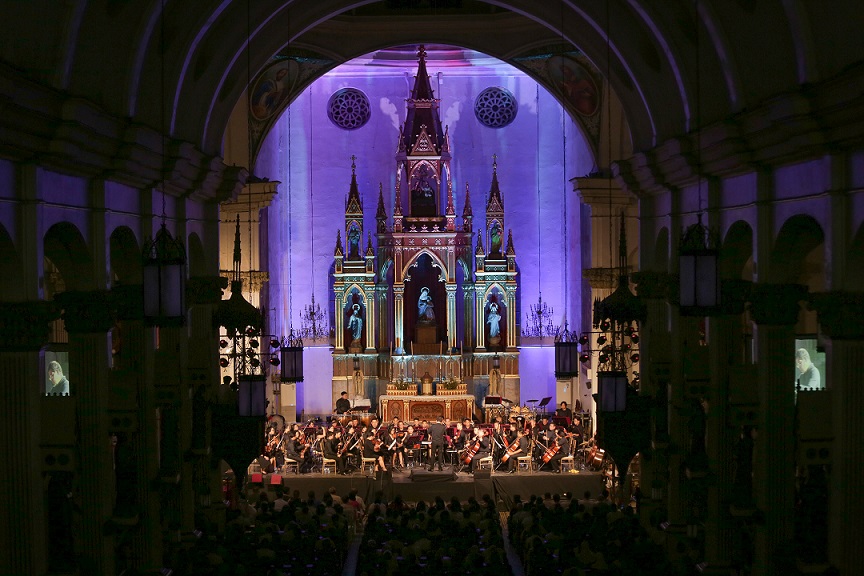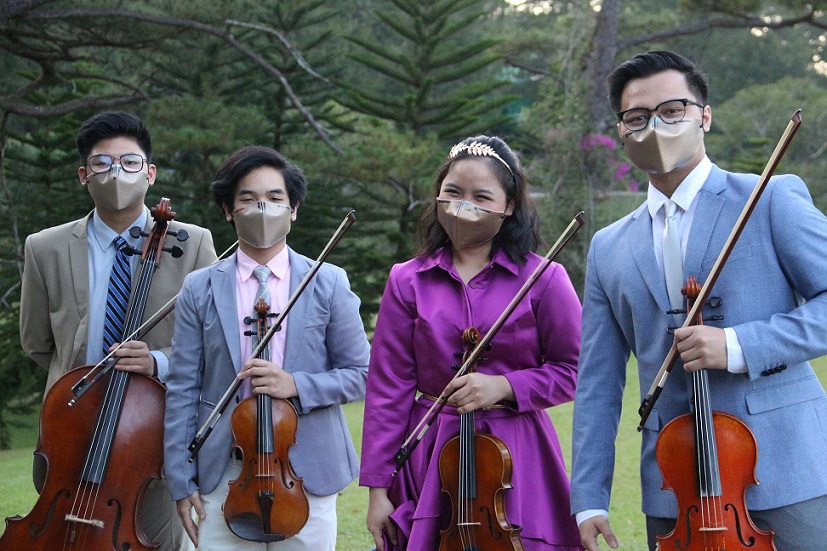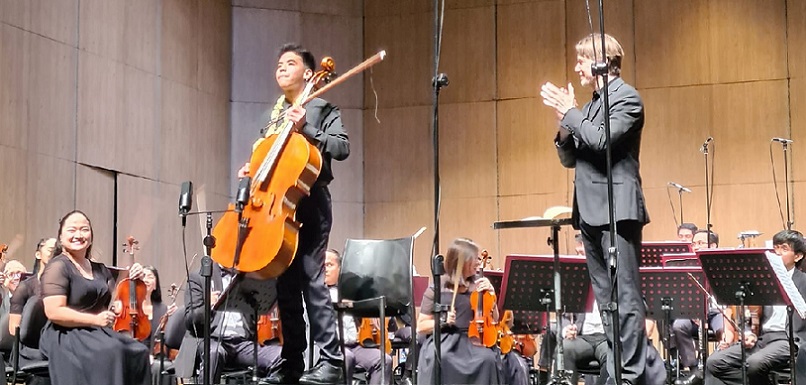Psychologists are right about classical music altering emotions. Scorched by Manila’s summer heat, anyone is bound to be at least irascible while heading to Circuit Makati for the April 23 press conference of the Manila Symphony Orchestra (MSO).
That the MSO would be playing classical and pop music by composer-conductors Antonín Dvořák (Czech), Andrea Morricone (Italian), Conrado del Rosario (Filipino), Pyotr IIyich Tchaikovsky (Russian), and John Williams (American) was an inviting prospect on that blistering afternoon. Under the baton of MSO executive director Jeffrey Solares, the music served as an announcement of the orchestra’s 99th concert season titled “In Pursuit of Excellence,” which, said Board of Trustees member Corazon Alvina, is about storytelling, community, resilience, and shared dreams — and an invitation to the public to discover the transformative power of music.
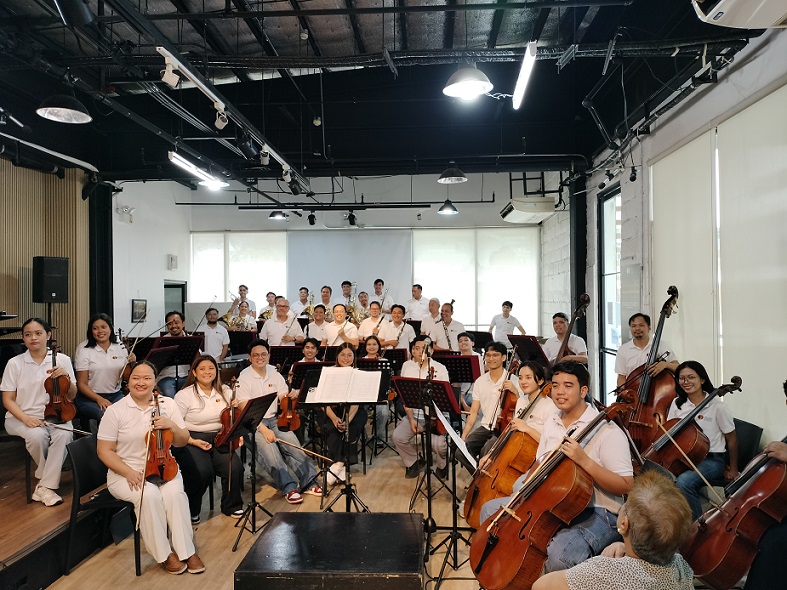
The season begins with the first concert “Music for Peace” on May 24 at the Aliw Theater, to commemorate the 80th anniversary of the post-Liberation MSO concerts organized between 1945 and 1946. Violin soloist Emanuel John Villarin, a Manila Symphony Junior Orchestra pioneer member, will play Dvořák’s “Symphony No. 9 — From the New World” and German composer-pianist Ludwig Van Beethoven’s Violin Concerto in D Major Op. 61. Villarin will be coming home from Berlin, where he’s on a scholarship, to do the show with conductor Marlon Chen, MSO’s current music director and principal conductor.
Shortly before 1p.m., the 40 musicians slowly made their way to their seats behind the sheet music stands — violinists and cellists in front and flutists, trombonists, tuba players, and drummer at the middle and back. The center, encircled by the violinists and cellists, was where the conductor stood.
Concert teaser
One’s irascibility vanished when the MSO began the second movement of Dvořák’s “Symphony No. 9.” The heat was forgotten in the somber, calming melodies. It was as if the musicians were smoothing out the wrinkles from the day’s early hours.
Solares said Dvořák’s piece had been part of the MSO repertoire since then music director Dr. Herbert Zipper included it in the orchestra’s first postwar concert on May 9, 1945, as a tribute to the American forces who helped liberate the country from the Japanese occupation.
“MSO played at the roofless Sta. Cruz Church in Binondo for the soldiers and survivors. The entire symphony was last performed in March 2015 by [the orchestra] in a concert commemorating the 70th anniversary of the end of World War II at the Meralco Auditorium,” added Solares before moving to “Cinema Paradiso” by Morricone, with Sara Maria Gonzales as soloist.
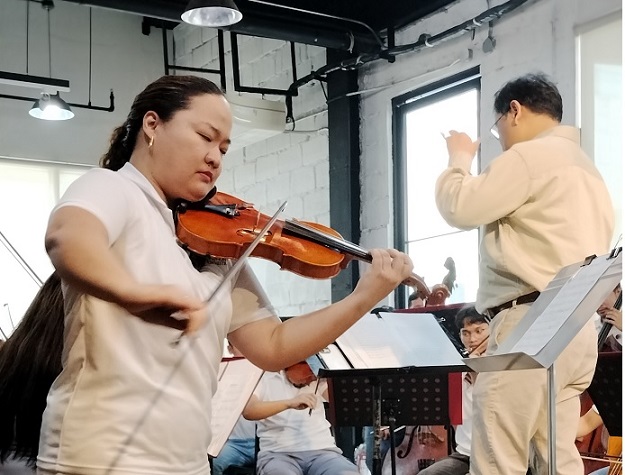
Gonzales strode to the center and stood near Solares. She placed the violin on her shoulder, and waited for her cue. She slid the bow up and down the strings, unleashing notes haunting and romantic, brimming with a yearning for something, someone, that left one teary-eyed midway through and at the end of the piece. She was applauded warmly as she returned to her seat.
Next was “Meditation for Orchestra” written by del Rosario, who’s also a jazz musician, when he was a student. “MSO is performing it for the first time,” Solares said.
The melodious sound of the violins and cellos engulfed the room, and images of bucolic scenes flooded the mind. The trombones, flutes, and drum coalescing midway with the strings released a thunderous boom of notes reminiscent of, one, a classic Hollywood film reaching a denouement and, two, the end of a meditation as the heart and spirit come down from an emotional crest.
The MSO segued into Tchaikovsky’s “Waltz from Sleeping Beauty,” and it was a throwback to a childhood of watching the ballet at the Cultural Center of the Philippines and Disney’s animated film “Sleeping Beauty.”
The symphony began with the collective, explosive trombone, tuba, and drums that quietly disappeared when the cellos and violins took over. And that was when you started humming, finger-conducting, and silently singing “I know you, I walked with you once upon a dream.” In your mind, you were watching the royals Aurora and Philip waltzing in the forest, then seeing ballerinas in their tutus and pointe shoes doing the grand jeté from end to end of the stage. Noticeably, at one point in the symphony, the two sides of musicians engaged in a music version of a dance-off — one side playing notes, daring the other to do one better, which the other side did — until the movement returned to that familiar bar every Disney fan hums.
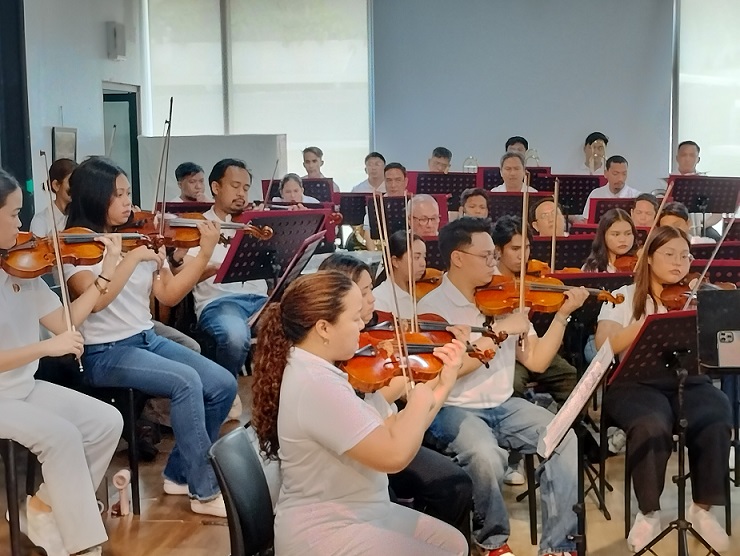
Pop songs
The MSO is no stranger to pop music. It’s finale number is a tribute to Williams and his catchy musical scores. On Solares’ cue, the MSO plays the legendary “Star Wars” theme — that unforgettable entrance of Darth Vader and his troops lined up and not daring to breathe. No one can miss this bombastic tune unless you’ve been living under a rock. Oddly, the orchestral music took the intimidating edge off Anakin Skywalker’s entrance, turning it into jaw-dropping, even thrilling, entrance of a Jedi.
The tribute turned into a name-that-tune game — the other soundtracks I identified were from the films “Jaws,” Christopher Reeves’ “Superman,” “Indiana Jones,” and “E.T.”
Solares knows that playing pop music is one way to attract people to listen to orchestral music. “It’s a popular approach, but sometimes it doesn’t work. We mix it up. People are ready to listen to a movement [of a symphony, which normally has four movements]. We want to show people that we can do both,” he explained. “We don’t look down on the audience. We’ve collaborated with pop artists Regine Velasquez and Martin Nievera, play video game music, and movie songs.”
Interestingly, he collaborated with rock bands in a show called “Rockestra” two decades ago at the Folk Arts Theater. But while he has no qualms about working with rock bands, he is adamant that scores must be properly arranged so distinctions can be seen and prevent the show from becoming “one big noise.” He is particular about rehearsals, stressing, “We also want rock bands to learn how to count and rehearse so we can have a productive and artistically satisfying concert.”
The conductor rehearses with the orchestra 12 times in a month for three hours, with a 15-minute break. Naturally, his musicians are expected to practice regularly on their own.

Through the years
The MSO is the longest performing orchestra in the Philippines, founded in 1926 by Alexander Lippay, who was selected by the Asociacion Musical de Filipinas. Lippay was the MSO’s first conductor and also its musical director until his passing in 1939. The orchestra became a symbol of resistance during WWII, refusing to perform for the Japanese by hiding their musical instruments (www.manilasymphony.com).
Soledad added that the resistance was carried a step further with the MSO’s disbandment in 1942. But after the liberation of Manila in 1945, Zipper gathered the MSO musicians for a concert to honor the war survivors and soldiers. People questioned the move, considering that the city was in ruins. Nonetheless, the concert pushed through with the MSO playing Beethoven’s “Symphony No. 3” and Dvořák’s “Symphony No. 9.”
Beethoven’s only completed violin concerto, D Major, Op. 61, was another piece played in several postwar concerts that started from June 16, 1945, at the Rex Theater. An 18-year-old Basilio Manalo performed the piece, which is regarded as one of the greatest violin concertos with its sprawling lyrical themes and symphonic breadth.
The MSO’s long history is a story of successes. In the 1970s, conductors Oscar Yatco, Helen Quach, and Regalado Jose led the orchestra. In 2001, the orchestra was reorganized by concert master Prof. Basilio Manalo, who appointed Prof. Arturo Molina as his successor.
In 2014, the MSO Foundation Inc. founded the Manila Symphony Junior Orchestra (MSJO) and the MSO Music Academy, which holds regular music lessons, master classes, and music camps.
In 2019, it was the first Filipino (and foreign) orchestra participating in the 5th Hunhe River Symphony Festival in Shenyang, China. The orchestra played the works of Philippine National Artists Lucrecia Kasilag and Ryan Cayabyab and other classical masterworks.
In 2024, under Solares’ mentorship, the MSJO captured the gold prize and Grand Prix for Orchestra at the 6th Bratislava International Youth Music in Slovakia in July 2024. A few days later it claimed First Place with Outstanding Success for string orchestra at the 16th Summa Cum Laude International Music Festival in Vienna, Austria (peopleasia.ph).
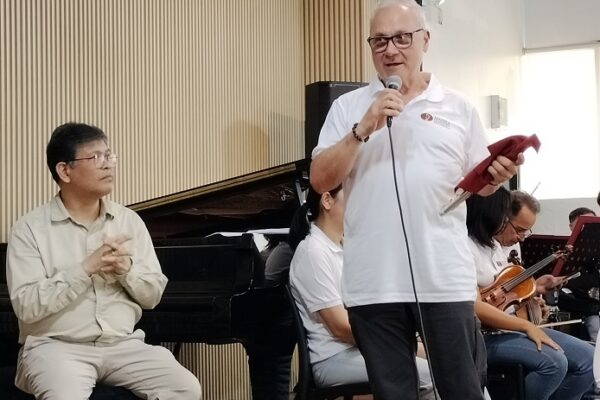
Landmark season
The MSO makes history again with its landmark season for 2025, which, according to Solares, will celebrate its linkages with music and artists from various countries, and feature the young artists-soloists it nurtured through its scholarships and training programs. The calendar of performances include “A Night in Hollywood” (June 28, Aliw Theater), “Brazilian Guitar and Cello” (Aug. 9, venue TBA), “Butterfly Lovers Violin Concerto” (Sept. 7, Aliw Theater), “Dancing with Tchaikovsky” (Sept. 27, Aliw Theater), and “The MSO 100th Anniversary Concert” (Jan. 22, Samsung Performing Arts Theater).
The significance of the MSO’s 100th anniversary is not lost on the musicians like Robert Schroeder, who was part of the mini concert that afternoon. Schroeder played for the orchestra as a casual musician and later as a regular member before he migrated to the United States.
“This is the life of music to my heart,” the flutist said. “It was my first musical job [and] what I learned is from MSO. I’m blessed to be part of MSO. Every time I’m back in the Philippines, I visit my old home.”
Tatum Julia Bao considers the MSO her second family. “It’s because of MSO that I was able to grow as a cellist,” said the University of Santo Tomas Conservatory of Music graduate.
Tickets are available at Ticketworld (premier.ticketworld.com.ph; MFPEACE25). For subscription packages, visit www.manilasymphony.com or call Rivas Ferrer at +63 917 850 1774.


